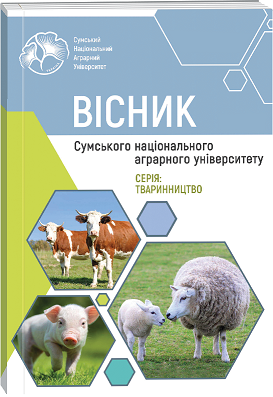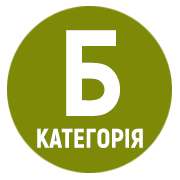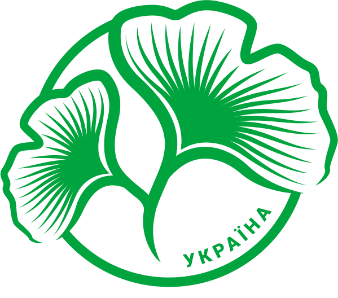DEPENDENCE OF BOAR CARCASS QUALITY AND ECONOMIC EFFICIENCY OF PORK PRODUCTION ON THEIR PRE-SLUTTER LIVE WEIGHT UNDER VARIOUS METHODS OF THEIR CASTRATION
Abstract
The article studied the dependence of boar carcass quality at different pre-slaughter weights and castration methods and the economic efficiency of their rearing and slaughter. For this purpose, 200 boars obtained from F1 sows (♀BW × ♂L) and terminal boars of the sentient line RIS-337 of English origin were divided into two groups, 100 surgically castrated on the second day of their life. At the same time, the other 100 remained uncastrated until the use of immunocastration, which was carried out with the Improvac vaccine at the age of 112 and 140 days. During rearing and fattening, the animals were kept in standard industrial conditions in group barns of 50 animals, with a fully slotted floor and an automated feeding system, which was carried out 10-14 times a day with liquid feed mixtures in a ratio of dry to liquid fractions of 1:2.7–3.0. When the experimental animals reached an average live weight of 110 kg, they were individually weighed and divided into three groups with pre-slaughter live weights of 100, 110, and 120 kg, with further slaughter at the Globinsky Meat Processing Plant LLC to determine the morphological composition of carcasses and large-cut semi-finished products. It was found that immunocastrated animals had a higher percentage of lean meat in the carcass and a reduced proportion of adipose tissue, which can be beneficial for meat producers who focus on the lean pork market. It was proved that the highest economic efficiency in fattening and slaughtering boars was achieved at a pre-slaughter live weight of 120 kg, regardless of the castration method, and the total profit from immunocastrated animals was higher due to lower feed consumption and optimal meat yield, which led to higher profit from its sale. It was found that in the shoulder-blade part of the carcass, surgically castrated pigs showed a higher weight and proportion of bones from the neck and skin on the back compared to immunocastrated counterparts but were inferior to the latter in terms of weight and proportion of single-cut pork from the neck, single-cut pork from the shoulder blade and shoulder bones. In the dorsal-lumbar part of the carcass, boars of both castration methods differed only in the higher weight and content of the beam and brisket bones in immunocastrated males compared to surgically castrated peers. The predominance of weight and content of most meat cuts in three parts of the carcass of 120 kg boars relative to lighter 100 and 110 kg analogs under both castration methods was proved. It was found that at slaughter with a live weight of 100 kg, immunocastration provided 140 UAH more profit than surgical castration. It was determined that the most appropriate income from the sale of large-cut semi-finished products is slaughter at a live weight of 120 kg, regardless of the castration method. It was determined that the average income was higher in immunocastrated boars, which indicates their potential economic advantage in industrial pig production. The use of immunocastration increases production profitability, especially in the case of lean pork sales. Further research is needed on the effect of castration on the long-term preservation of meat quality and consumer properties of products.
References
2. Andrieieva, D., Povod, M. (2020). Vplyv imunnoi kastratsii svynei na yikh zabiini ta miasni yakosti pry riznii peredzabiinii zhyvii masi [Influence of immune castration of pigs on their slaughter and meat qualities at different pre-slaughter live weight]. Bulletin of Sumy National Agrarian University. The Series: Livestock, 4(43), 20–26. https://doi.org/10.32845/bsnau.lvst.2020.4.3. (in Ukrainian)
3. Backus, G., Støier, S., Courat, M., Bonneau, M., Higuera, M. (2014). First progress report from the European declaration on alternatives to surgical castration of pigs. Retrieved from http://www.gruppoveterinariosuinicolomantovano.it/documenti/first_progress_report_from_the_european.pdf (Accessed on 14.09.2024).
4. Batorek, N., Čandek-Potokar, M., Bonneau, M., Van Milgen, J. (2012a). Meta-analysis of the effect of immunocastration on production performance, reproductive organs and boar taint compounds in pigs. Animal, 6(8), 1330–1338. https://doi.org/10.1017/S1751731112000146.
5. Batorek, N., Škrlep, M., Prunier, A., Louveau, I., Noblet, J., Bonneau, M., Čandek-Potokar, M. (2012b). Effect of feed restriction on hormones, performance, carcass traits, and meat quality in immunocastrated pigs. Journal of Animal Science, 90, 4593–4603. https://doi.org/10.2527/jas.2012-5330.
6. Batorek-Lukač, N., Kress, K., Čandek-Potokar, M., Fazarinc, G., Škrlep, M., Poklukar, K., Wesoly, R., Stefanski, V., Vrecl, M. (2022). Immunocastration in adult boars as a model for late-onset hypogonadism. Andrology, 26. https://doi.org/10.1111/andr.13219.
7. Bee, G., Quiniou, N., Maribo, H., Zamaratskaia, G., Lawlor, P.G. (2020). Strategies to meet nutritional requirements and reduce boar taint in meat from entire male pigs and immunocastrates. Animals, 10, 1950. https://doi.org/10.3390/ani10111950.
8. Boler, D.D., Puls, C.L., Clark, D.L., Ellis, M., Schroeder, A.L., Matzat, P.D., Killefer, J., McKeith, F.K., Dilger, A.C. (2014). Effects of immunological castration (Improvest) on changes in dressing percentage and carcass characteristics of finishing pigs. Journal of Animal Science, 92(1), 359–368. https://doi.org/10.2527/jas.2013-6863.
9. Bonneau, M., Weiler, U. (2019). Pros and cons of alternatives to piglet castration: Welfare, boar taint, and other meat quality traits. Animals, 9(11), 884. https://doi.org/10.3390/ani9110884.
10. Borell, E., Bonneau, M., Holinger, M., Prunier, A., Stefanski, V., Zöls, S., Weiler, U. (2020). Welfare aspects of raising entire male pigs and immunocastrates. Animals, 10(11), 2140. https://doi.org/10.3390/ani10112140.
11. Brewster, V., Nevel, A. (2013). Immunocastration with Improvac™ reduces aggressive and sexual behaviours in male pigs. Applied Animal Behaviour Science, 145(1–2), 32–36. https://doi.org/10.1016/j.applanim.2013.01.012.
12. Daza, A., Latorre, M. A., Olivares, A., López-Bote, C. J. (2014). The effect of immunocastration and a diet based on granulated barley on growth performance and carcass, meat and fat quality in heavy gilts. Animal, 8(3), 484–493. https://doi.org/10.1017/S1751731113002292.
13. Driessen, B., Van Beirendonck, S., Buyse, J. (2020). Effects of housing, short distance transport and lairage on meat quality of finisher pigs. Animals, 10(5), 788. https://doi.org/10.3390/ani10050788.
14. EFSA. (2004). Welfare aspects of the castration of piglets. Scientific Report of the Scientific Panel for Animal Health and Welfare on a request from the Commission related to welfare aspects of the castration of piglets European Food Safety Authority 2004 AHAW/04-087. [Elektronnyi resurs]. Rezhym dostupu: https://efsa.onlinelibrary.wiley.com/doi/epdf/10.2903/j.efsa.2004.91. (data zvernennia 09.03.2025)
15. European Commission. (2010). European declaration on alternatives to surgical castration of pigs. [Elektronnyi resurs]. – Rezhym dostupu: https://food.ec.europa.eu/system/files/2016-10/aw_prac_farm_pigs_cast-alt_declaration_en.pdf. (data zvernennia 09.03.2025)
16. Font-i-Furnols, M., Gispert, M. (2019). Comparison of meat quality characteristics and boar taint prevalence in pigs with different production systems. Meat Science, 156, 108–116. https://doi.org/10.1016/j.meatsci.2019.05.007.
17. Font-i-Furnols, M., Tous, N., Esteve-Garcia, E., Gispert, M. (2012). Do all consumers accept the same risk of boar taint? Meat Science, 92(2), 180–187. https://doi.org/10.1016/j.meatsci.2012.04.005.
18. Fredriksen, B., Johnsen, A. M. S., Skuterud, E. (2011). Consumer attitudes towards castration of piglets and alternatives to surgical castration. Research in Veterinary Science, 90(2), 352–357. https://doi.org/10.1016/j.rvsc.2010.06.018.
19. Gispert, M., Oliver, M. A., Pérez, J., Suarez, P., Juez, J. (2010). Influence of castration method on carcass characteristics in pigs. Livestock Science, 132(1–3), 155–159. https://doi.org/10.1016/j.livsci.2010.05.012.
20. Gispert, M., Oliver, M. A., Velarde, A., Suarez, P., Pérez, J., Font-i-Furnols, M., Diestre, A., Juez, J. (2012). Effect of transport and lairage time on meat quality in pigs. Meat Science, 90(3), 690–696. https://doi.org/10.1016/j.meatsci.2011.10.002.
21. Huber, L., Squires, E., Mandell, I., De Lange, C. (2018). Age at castration (surgical or immunological) impacts carcass characteristics and meat quality of male pigs. Animal, 12(3), 648–656. https://doi.org/10.1017/S1751731117002063.
22. ISO 23781:2021. Operating procedures of pig slaughtering. International Organization for Standardization, Geneva, Switzerland. [Elektronnyi resurs]. Rezhym dostupu: https://standards.iteh.ai/catalog/standards/iso/300396ea-2102-4999-897f-c2f5315f3a31/iso-fdis-23781. (data zvernennia 09.03.2025)
23. ISO 3100-1. Meat and meat products – Sampling and preparation of test samples – Part 1: Sampling. International Organization for Standardization, Geneva, Switzerland. [Elektronnyi resurs]. – Rezhym dostupu: https://standards.iteh.ai/catalog/standards/iso/173c37dd-6a81-4146-beeb-bb1c6fe94c52/iso-3100-1-1991 (data zvernennia 09.03.2025)
24. Jaros, P., Bürgi, E., Stärk, K. D. C., Claus, R., Hennessy, D., Thun, R. (2005). Effect of immunization against GnRH on androstenone concentration, growth performance and carcass quality in intact male pigs. Livestock Production Science, 92, 31–38. https://doi.org/10.1016/j.livprodsci.2004.07.011.
25. Lucas, D. S., Siqueira, E. T. F., Haguiwara, M. M. H., Azevedo, S. S., Yotsuyanagi, S. E., Silva, T. J. P., Soto, F. R. M. (2016). Effect of piglet castration with nonsurgical sterilant on the zootechnical performance and pork carcass quality. Arquivo Brasileiro de Medicina Veterinária e Zootecnia, 68(6). https://doi.org/10.1590/1678-4162-9154.
26. Mancini, M. C., Menozzi, D., Arfini, F. (2017). Immunocastration: Economic implications for the pork supply chain and consumer perception. An assessment of existing research. Livestock Science, 203, 10–20. https://doi.org/10.1016/j.livsci.2017.06.012.
27. Mykhalko, O., Povod, M., Sokolenko, V., Verbelchuk, S., Shuplyk, V., Shcherbatiuk, N., Melnyk, V., Zasukha, L. (2022). The influence of the castration method on meat cuts indicators of pig carcasses. Scientific Papers. Series Management, Economic Engineering in Agriculture and Rural Development, 22(3), 451–458. https://managementjournal.usamv.ro/pdf/vol.22_3/Art48.pdf.
28. Mykhalko, O. G. (2020). Vidhodivelni yakosti svynei irlandskoho pokhodzhennia za riznykh typiv hodivli [Feeding qualities of pigs of Irish origin under different types of feeding]. Bulletin of the Sumy National Agrarian University. Livestock Series, 4, 51–57 (in Ukrainian). https://doi.org/10.32845/bsnau.lvst.2020.3.9.
29. Mykhalko, O. G. (2021). Zalezhnist vidhodivelnykh yakostei svynei datskoho pokhodzhennia vid typu hodivli [Dependence of fattening qualities of pigs of Danish origin on the type of feeding]. Bulletin of the Sumy National Agrarian University. Livestock Series, 4, 99–108 (in Ukrainian). https://doi.org/10.32845/bsnau.lvst.2021.4.17.
30. Nikbin, S., Panandam, J. M., Sazili, A. Q. (2016). Influence of pre-slaughter transportation and stocking density on carcass and meat quality characteristics of Boer goats. Italian Journal of Animal Science, 15(3), 504–511. https://doi.org/ 10.1080/1828051X.2016.1217752.
31. Pauly, C., Spring, P., O’Doherty, J. V., Ampuero Kragten, S., Bee, G. (2009). Growth performance, carcass characteristics and meat quality of group-housed boars subjected to different levels of immunocastration. Animal, 3(8), 1282–1291. https://doi.org/10.1017/S1751731109004735.
32. Pinto, P. R., Martin, L., Ramos, A., Conceição, M., da Costa, R., Vaz-Velho, M. (2022). Feeding and housing boars after puberty without castration allows for good performance and low boar taint. Journal of Animal and Feed Sciences, 31(2), 123–134. https://doi.org/10.22358/jafs/148234/2022.
33. Poklukar, K., Čandek-Potokar, M., Vrecl, M., Batorek-Lukač, N., Fazarinc, G., Kress, K., Weiler, U., Stefanski, V., Škrlep, M. (2021). The effect of immunocastration on adipose tissue deposition and composition in pigs. Animal, 15(2), 100118. https://doi.org/10.1016/j.animal.2020.100118.
34. Povod, M., Mykhalko, O., Gutyj, B., Borshchenko, V., Verbelchuk, T., Lavryniuk, O., Shostia, H., Shpyrna, I. (2024). Growth intensity and feeding efficiency of surgically and immunologically castrated male pigs on a liquid type of feeding. Scientific Papers. Series Management, Economic Engineering in Agriculture and Rural Development, 24(1), 799–810. https://managementjournal.usamv.ro/pdf/vol.24_1/volume_24_1_2024.pdf.
35. Povod, M., Mykhalko, O., Kyselov, O., Opara, V., Andreychuk, V., Samokhina, Y. (2021). Effects of various preslaughter weights on the physico-chemical qualities of pig meat. Journal of Advanced Veterinary and Animal Research, 8(3), 521–533. https://doi.org/10.5455/javar.2021.h542.
36. Povod, M. G., Bankovska, I. B., Shpetnyi, M. B., Mykhalko, O. H. (2020). Particularity of sensory evaluation of “boar taint” in the pork by consumers. Scientific Papers. Series Management, Economic Engineering in Agriculture and Rural Development, 20(2), 389–395. https://managementjournal.usamv.ro/pdf/vol.20_2/volume_20_2_2020.pdf. Accessed on 14.09.2024.
37. Povod, M. G., Mykhalko, O. G., Shpetniy, M. B., Zhizhka, S. V., Klindukhova, I. M., Nechmilov, V. M. (2018). Morfolohichnyi sklad tush svynei pry riznykh sposobakh kastratsii [Morphological composition of pig carcasses by different methods of castration]. Scientific and Technical Bulletin IT NAAS, 119, 114–122 (in Ukrainian). http://irbis-nbuv.gov.ua/cgi-bin/irbis_nbuv/cgiirbis_64.exe?C21COM=2 I21DBN=UJRN P21DBN=UJRN IMAGE_FILE_DOWNLOAD=1 Image_file_name=PDF/Ntb_2018_119_17.pdf. Accessed on 11.07.2022.
38. Prunier, A., Bonneau, M., Borell, E. H., Cinotti, S., Gunn, M., Fredriksen, B., Giersing, M., Morton, D., Tuyttens, F., Velarde, A. (2006). A review of the welfare consequences of surgical castration in piglets and the evaluation of non-surgical methods. Animal Welfare, 15, 277–289. https://www.researchgate.net/publication/262862125_A_review_of_the_welfare_consequences_of_surgical_castration_in_piglets_and_the_evaluation_of_non-surgical_methods. Accessed on 11.07.2022.
39. Prunier, A., Mounier, A. M., Hay, M. (2005). Effects of castration, tooth resection, or tail docking on plasma metabolites and stress hormones in young pigs. Journal of Animal Science, 83, 216–222. https://doi.org/10.2527/2005.831216x.
40. von Borell, E., Baumgartner, J., Giersing, M., Jäggin, N., Prunier, A., Tuyttens, F., Edwards, S. A. (2009). Animal welfare implications of surgical castration and its alternatives in pigs. Animal, 3(11), 1488–1496. https://doi.org/10.1017/S175173110900467X.
41. Weiler, U., Font i Furnols, M., Fischer, K., Kemmer, H., Oliver, M. A., Gispert, M., Dobrowolski, A., Claus, R. (2006). Influence of different boar taint compounds on odor perception. Meat Science, 72(2), 309–315. https://doi.org/10.1016/j.meatsci.2005.07.011.
42. Zamaratskaia, G., Rasmussen, M. K. (2015). Immunocastration of male pigs – situation today. Procedia Food Science, 5, 324–327. https://doi.org/10.1016/j.profoo.2015.09.064.
43. Zoels, S., Reiter, S., Ritzmann, M., Weiß, C., Numberger, J., Schütz, A., Lindner, P., Stefanski, V., Weiler, U. (2020). Influences of immunocastration on endocrine parameters, growth performance and carcass quality, as well as on boar taint and penile injuries. Animals, 10(2), 346. https://doi.org/10.3390/ani10020346

 ISSN
ISSN  ISSN
ISSN 



